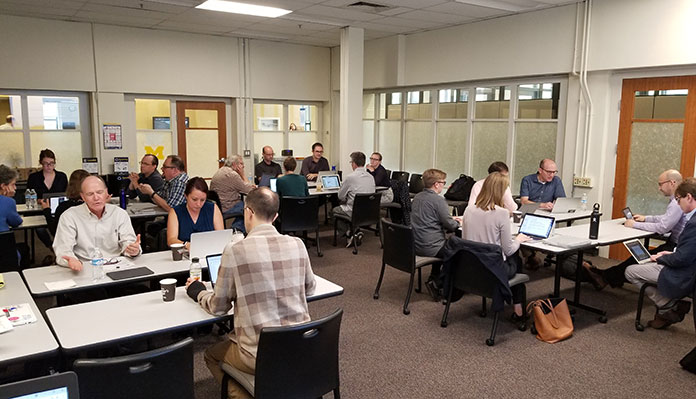Advanced Technology | Sustainability & Climate Action
Digital Infrastructure Makes Scholarship Durable for Generations

It sometimes feels like you’ll always be able to retrieve electronic files or data. Until you can’t.
“The problem with digital is that things break easily. Apps go out of date, and all of a sudden you can’t open things,” said Jeremy Morse, Michigan Publishing’s Director of Publishing Technology. “Digital preservation takes active management and care. It also means having contingency plans for things that can go wrong.”
Doing it one way in CLOCKSS and another in APTrust is strategic diversity. If it turns out one approach was better, we’ve hedged our bets.
When it comes to scholarly research, it’s vital to have access to stable source material. That’s why a key mission of Michigan Publishing’s Fulcrum platform is preservation. Michigan Publishing approaches this from several angles: preserving the data exactly as it is at the smallest, most basic level (bit preservation); reformatting the content to work in future file formats and programs (migration); and taking a “snapshot” of the content in its original form to preserve the initial user experience (emulation).
Digital preservation takes active management and care.
This approach has required different tools and partnerships for Michigan Publishing: CLOCKSS, a digital preservation archive that preserves scholarly publications in their original format, and Academic Preservation Trust (APTrust), which serves as a disaster recovery service at the bit level, in the event of a massive data loss or a university no longer being able to support the maintenance of the data in question.
CLOCKSS actively scrolls Michigan Publishing’s site for data to update, while APTrust requires manually depositing new data every month. It’s a lot of work for the tech team, but there’s a reason durability is one of the core Fulcrum missions.
“As a scholar, if you’re doing research and you cite something in your work, you want future scholars to be able to find that same thing you saw when you cited it so the integrity of your argument is maintained,” Morse said.
Academic Preservation Trust, committed to the creation and management of a sustainable environment for digital preservation.
CLOCKSS, provides a sustainable dark archive to ensure the long-term survival of Web-based scholarly content.